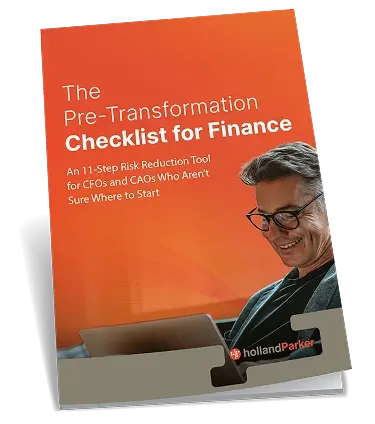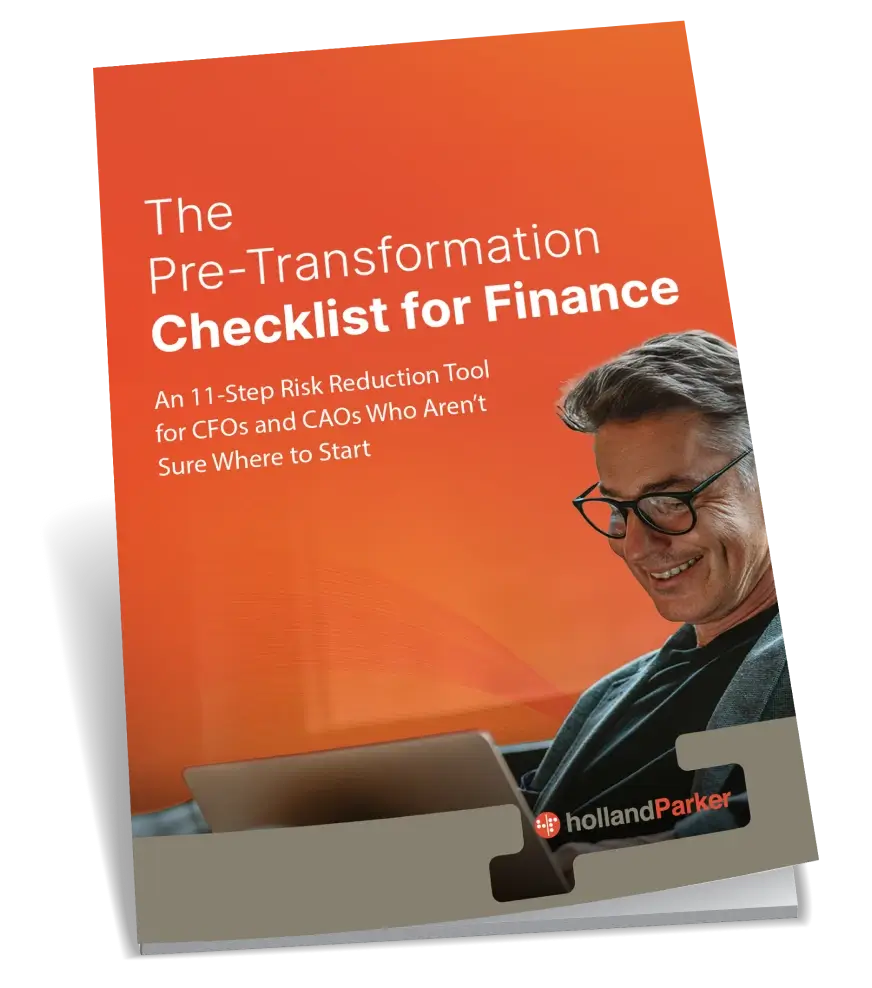Finance Chiefs Agree You Should Stop Using Excel But What Should You Use Instead?
First computers, then internet, then cell phones. Now Facebook, Instagram, artificial intelligence, and virtual reality.
Does technology feel like it’s been accelerating more rapidly in the past 20 years? Well, that’s because it has. Like compounding interest, the rate of change in human evolution and technology compounds as well, and it always has. As humans develop new technologies that bring them together and make it easier to share ideas, knowledge, and information (such as via the internet), humans are able to accomplish more in less time than they could before.
So, while Microsoft Excel was only released 30 years ago, and it did change the face of accounting forever, it is quickly becoming outdated. The software has simply not kept up with the increasingly complex demands of the finance and accounting industry, nor has it adapted to incorporate all the new technology that we have available to us now, such as artificial intelligence.
Luckily, newer financial technologies are quickly replacing the outdated ones, taking advantage of the changing times and providing 21st century companies with a 21st century solution. In a nutshell, Excel helped track and manipulate data, but now companies are shifting their focus towards analytics. As Mark Garrett, the Finance Chief at Adobe Inc. said, “I don’t want financial planning people spending their time importing and exporting and manipulating data, I want them to focus on what the data is telling us.”
In order to remain competitive, companies are reducing their reliance on Excel and shifting to software that allows them to better analyze corporate financial data and predict future results. That’s where OneStream comes in. With each pain point that Excel presents, OneStream offers a solution
Excel Lacks Integration
While you can often import and export data to and from Excel, in the end, the data you store in this program is separate from other systems. Microsoft Excel is a standalone application that does not integrate directly with any other business systems. This makes it difficult for users to get the most out of their technology when all of their data is in a program that is disconnected from other systems. Your financial professionals waste hours trying to integrate systems and your data often loses integrity in the process.
This also makes it easier for your company to lose its data forever. When information is kept in one place, it’s far more vulnerable. Because Excel doesn’t integrate with other business systems, if the employee who’s creating an important spreadsheet leaves and neglects to pass on their valuable data and information, it’s gone. If a disaster were to happen to your company that caused you to lose data, your Excel spreadsheets would be irreplaceable because they aren’t automatically backed up or transferred to any other business systems.
OneStream Offers a Unified Platform
It’s important that you keep all your data in one place, and OneStream caters to that need, offering true direct integration with pre-built XF integration connectors. OneStream integrates with accounting systems you already use, such as Oracle and SAP, allowing accountants to do their work in the same platform without training on new systems. In fact, the program offers intuitive guided workflows that make it incredibly easy to use.
Excel Hampers Collaboration
One of the biggest complaints about Excel is that you can’t have multiple users working together in one document. Instead, while employee A is making a change and saving version A of the spreadsheet, employee B is making a different change and saving version B of the spreadsheet. You end up with dozens of different versions of the same spreadsheet, which not only hampers collaboration between your employees and across departments, but also threatens accuracy by creating huge inconsistencies in data.
What’s worse, Excel doesn’t track changes or provide transparency, so if someone compromises your data, you have no way of tracking who made the change when and likely no way of recovering your old data. That is, if you even notice the change, because incorrect alterations often go unnoticed in Excel.
OneStream Offers Efficient Collaboration
Because OneStream is a completely unified system, collaboration between employees and even across departments is fast and easy. Professionals in different disciplines can collaborate in a way that is structured and efficient, creating complex documents that provide much deeper insights into financial and operational performance.
Onestream also tracks changes to data for easy auditing, allowing you to see who made changes and when. The software offers 100% transparency and audit trails, so that you never have to worry about data loss or not being able to recover data after an incorrect change is made. Metadata and process change visibility from report to source allow you to see what’s happening every step of the way.
Excel is Error Prone
Because Excel isn’t integrated and doesn’t allow multiple users to work together easily, it’s also highly error prone. In fact, the CEO of Wintrust Financial dropped Excel for exactly this reason. One day, he asked his employees questions about specific data, and each one gave him a completely different answer.
Mistakes in Excel are probably more common than you think. About 88% of spreadsheets contain significant errors according to F1F9. At larger companies, another 50% contain material defects. When each part of a spreadsheet relates to and affects other parts, tiny errors can easily snowball into catastrophic decisions, like the JP Morgan disaster.
OneStream Offers Error Notifications
With a software package that consolidates data at the departmental level and is streamlined and unified, errors are greatly reduced. With a well-defined reconciliations process and the best practices that OneStream supports, your organization will be able to ensure data integrity and accurate reports.
What’s more, OneStream provides users with error notifications that give your financial professionals the key information they need to quickly and easily fix any errors that do come up and complete processes efficiently and accurately.
Excel is a Time Suck
There are many time-saving features that Microsoft Excel lacks. It does not offer automatic updates, which creates hours upon hours of tedious work for talented financial professions who could be using their skills in far more effective manners.
Excel is not designed to consolidate financial results, so when it’s time to close the books, you likely find your employees working many hours of overtime in order to complete the process. Not only is this an inefficient, exhausting use of your employees, but a slow close prevents your organization from competing and keeping up in today’s fast-paced business world. The Senior Research Director for Financial Management at APQC, Mary Driscoll, recommends closing in 10 days or less. If you can close that quickly, you’ll end up spending 50% less than your slower competitors. According to her, anything over 20 days is not competitive in today’s world.
OneStream Offers Streamlining and Automation
By streamlining your financial close and automating financial consolidation tasks, OneStream is one of the most efficient and quick platforms out there. The software’s guided workflows offer faster reporting and greatly reduce your company’s close cycle. Between a standard process for pre-load mapping and intersection validation, OneStream will give you a close cycle that’s easy and efficient, freeing up your financial professionals to work on more high-value tasks.
OneStream even offers features that increase your organization’s financial analytic capabilities. Modeling and predictive analysis allows employees to easily and quickly model and compare various hypotheticals. For example, if a job is losing money, they can see immediately what your financials would look like if you dropped it. This saves you time and money.
It’s clear that corporate financial reporting, analysis and planning has outgrown the capabilities of Excel. OneStream was designed and built to address the shortcomings of Excel and push you into the future. With OneStream’s world-class streamlining, automation, and unification features, your organization can compete with the best.
To learn more visit www.onestream.com











